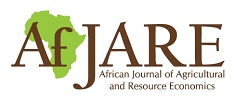African Journal of Agricultural and Resource Economics
(AfJARE)
Journal Africain d’Économie Agricole et des Ressources
(JAEAR)
Published by the African Association of Agricultural
Economists (AAAE)
ISSN 1993-3738
Volume 17, No. 3 (September 2022)
Women’s time allocation is a dimension of women’s empowerment in agriculture, and is recognised as a pathway through which agriculture can affect child nutritional status in developing countries. Longer hours of farm work can potentially increase women’s time constraints, reducing the time allocated to child-caring responsibilities and raising the risk of poor child nutritional status.
This study uses primary data from smallholder sugarcane farmers in Kenya to investigate how women’s empowerment affects household poverty. Instrumental-variable tobit (IV tobit) was used to determine the causality between women’s empowerment and household poverty.
One of the three components of Rwanda’s flagship anti-poverty programme, Vision 2020 Umurenge (VUP), is the provision of credit to relatively poor households, nearly all of them farmers. In this paper we estimate the impact of the programme using high-quality household survey data from 2013/2014 and 2016/2017.
Variability in climate and debility in soil fertility affect agrarian production, especially in sub-Saharan Africa, and thus threaten food security. This has prompted the seed sector to introduce various varieties of climate-smart maize in Kenya and release them in the market. In contrast, there is little experiential insight into how the adoption of these varieties by small-scale farmers affects their household income.
The adoption of improved agricultural technologies is known to significantly improve incomes, create more wealth, alleviate poverty and contribute to rural development in many developing countries.
The reintroduction of innovative forms of input subsidies in sub-Saharan Africa (SSA) following the food crisis of 2008 raises concerns about their effectiveness in the fight against poverty. In this context, this paper examines the effect of the targeted fertiliser subsidy implemented in Togo from 2017 to 2019.
